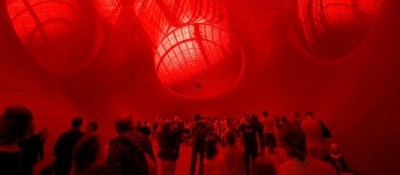The house on the outskirts of Sibiu is gently placed on a difficult plot and finds a subtle balance between openness and protection.
The house is located in a residential area with lots of terrains whose shapes and sizes come out further to plotting a steep land. After the Revolution, these plots offering a double access from the edging streets have been subdivided in an uncontrolled manner.
News

We live in the future-in the future that only the architects of 60’s imagined it, some even programmatically, like those in Japan, grouped in architecture Metabolism movement.
Mori Art Museum proposes to go back in their future through a fabulous show, the first in the world, until 15 January 2012. In Tokyo … If you did not know where you can celebrate The New Year’s Eve :)

Dust poisoning, dreams and stereotypes cut out off the media, everyday experience among Berceni blocks of flats, some contagious humour, destabilized framing, light-headed stylistic collages, mixed cultural allusions and colour hallucinations are part of the aesthetic ammunition of artist Nicolae Comanescu whose paintings propose unusual trips among actual urban deeds and collective imaginary. Mirroring his major creative trends between 1998 and 2010 (Rostopasca period, “Grand Prix”, “Beach Culture in Bercsenyi”, “Dust and Powder”), the 88 works gathered under “Berceni” heading within a retrospective exhibition hosted at the National Museum of Contemporary Art (NMCA) might signify a replay and refreshing of some conceptual attitudes that marked critical postmodernism in the West, in mid ‘70s: aesthetic nonconformism, semantic multicoding and particularly an obsessive appeal to the idea of multiple reality.
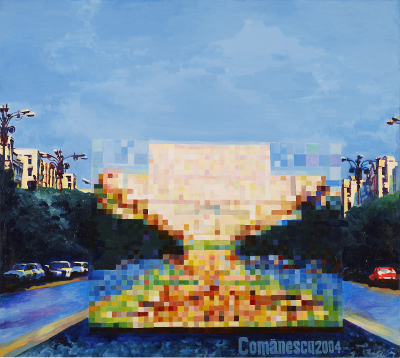
A cemetery extension located on an island between Venice and Murano seeks to redefine some of the original qualities of this place, while offering a greater sense of the lagoon context. The San Michele Cemetery, Venice’s principal cemetery, is located on an island between Venice and Murano. This historic site has been in continuous development for over four hundred years but has recently evolved to a point where the romantic image of its outer face is in contrast to its interior municipal character. In order to address this obvious imbalance, the proposal seeks to redefine some of the cemetery’s original physical qualities.
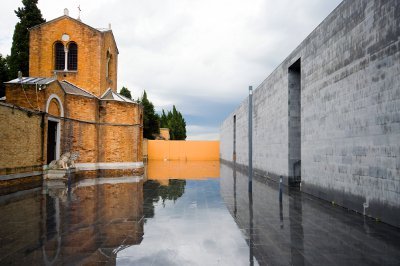
The design as a memory recovery: some urban furniture made from building elements of the National Dance Center of Bucharest (NDCB), currently in full demolition. On Saturday night going into Sunday, during the project Occupied NDCB (see Zeppelin 94), Eduard Gabia started to cut metal artifacts and share them with the participants. Equipped with gloves, goggles and overalls, he cut pieces of the railings with a metal cutter.
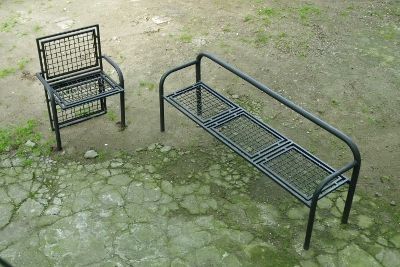
Built in a public-private partnership, the new market in Celje was designed as a generator of life in the city centre able to resuscitate the surrounding area. The town market is situated in the heart of the city. Ever since it was formed, in the middle of the previous century, the market has represented the centre of urban activity in the city. In contrast to the old market, the new development is designed as an extrovert urban area, a kind of covered city square which is inextricably linked to the surrounding urban space.
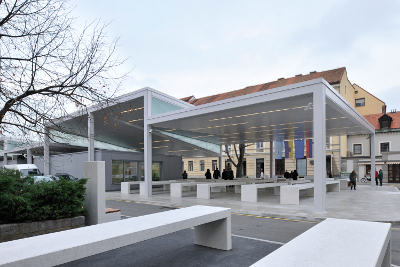
The architecture of this block of flats is mostly due to the critical reference to an unfortunate context and to the negotiation between the individual and the collective. Developed in one of the famous satellite-dormitory-cities of Bucharest, quiet yet lacking any character – besides the one given by some expensive and anachronic self-referential buildings, appearing from behind some giant fences – this project was from the very beginning marked by a critical-ironical detachment from the context.
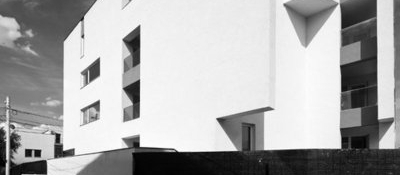
The “Canotca” – a model of innovative tradition recovery
Rowmania project initiated by Ivan Patzaichin Association – Mila 23 aims at supporting locals and traditions specific to the Danube Delta.
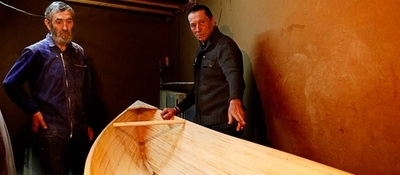
Alba Carolina Citadel – a story about world heritage destruction advertised as cultural valorisation and supported by EU funds
Recently, in our 93 issue, I was pointing out a highly questionable intervention carried out on the Alba Carolina citadel from Alba Iulia, important reference for Vauban citadels. The previous text was especially impugning the concept of the project conceived by arch. Gheorghe Lancrajan-Franchini assonant to the European level principles. The two major tenets flagrantly contradicted in this case are: 1) car traffic limitation in favour of non-polluting conveyance with increased social potential (walking and cycling) in historic centres and 2) green areas conservation and multiplication with a paricular focus on trees.
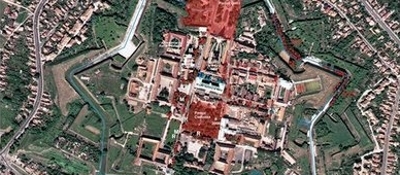
Anish Kapoor’s installation for Monumenta 2011 is a true architectural piece of work, an exceptional discourse about interior and exterior, limits, structure, and scale.
Ever since its opening during the World Exhibition of 1900, Grand Palais was a major exhibition space in France’s capital. Due to its vast volume flooded with light and the spectacular structure of the roof, it could shelter variegated events, from Chanel fashion parades, car fairs, horse races to the work of the most famous world artists.
